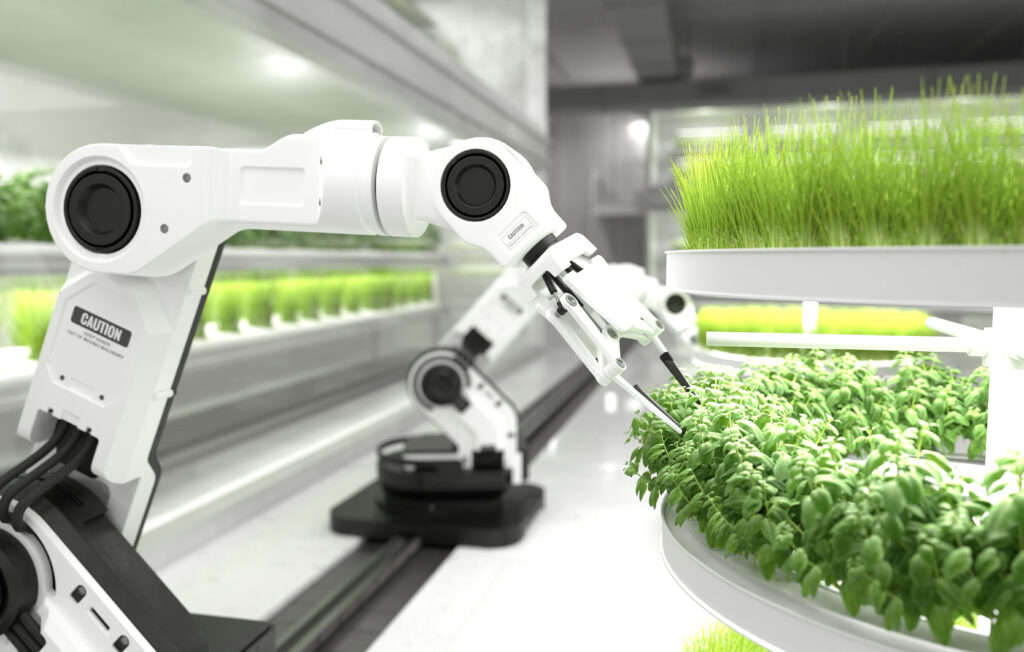Robots in Agriculture: Improving Farming Practices and Crop Yield
The Future of Farming: How Robots are Revolutionizing Agriculture to Boost Productivity and Sustainability

Introduction:
In recent years, the agricultural industry has witnessed a significant transformation with the introduction of robotics technology. Robots are revolutionizing traditional farming practices and playing a crucial role in enhancing crop yield, reducing labor costs, and promoting sustainable agriculture. With their ability to perform repetitive tasks, gather data, and execute precise actions, robots are transforming the way we grow and harvest crops. In this article, we will explore the various ways in which robots are improving farming practices and increasing crop yield, ushering in a new era of efficiency and productivity in agriculture.
Precision Farming: Optimizing Crop Management with Robots
Precision farming has gained immense popularity due to its ability to optimize resource allocation and improve crop management. Robots equipped with advanced sensors and imaging technologies can assess soil conditions, monitor plant health, and detect pests or diseases with unprecedented accuracy. This data-driven approach enables farmers to make informed decisions about irrigation, fertilization, and pest control, leading to more efficient use of resources and higher crop productivity. Robots can precisely apply fertilizers and pesticides, reducing waste and minimizing environmental impact. Additionally, they can perform tasks such as seeding and transplanting with exceptional precision, ensuring optimal spacing and reducing seed waste.
Autonomous Harvesting: Streamlining the Crop Harvesting Process
One of the most labor-intensive and time-consuming tasks in agriculture is crop harvesting. However, robots are now taking the canter stage in this area, offering a viable solution to the challenges associated with manual labor shortages. Autonomous harvesting robots equipped with computer vision and machine learning algorithms can identify ripe fruits or vegetables, navigate through fields, and perform delicate harvesting operations. By reducing dependence on human labour, these robots not only streamline the harvesting process but also minimize the risk of crop damage and improve overall crop quality.
Weed and Pest Control: Targeted and Environmentally Friendly Solutions
Weeds and pests pose significant threats to crop yield and quality. Traditionally, controlling weeds and pests involved the widespread use of chemicals, which raised concerns about environmental pollution and human health. However, robots are revolutionizing this aspect of agriculture by providing targeted and environmentally friendly solutions. Weed control robots can autonomously navigate through fields, identify weeds, and selectively apply herbicides only where needed, reducing chemical usage, and minimizing environmental impact. Similarly, robots equipped with sensors and cameras can detect pests and diseases at an early stage, allowing for prompt intervention and precise application of treatments.
Monitoring and Data Analysis: Improving Decision-Making in Agriculture
Accurate and timely data is crucial for making informed decisions in farming. Robots equipped with sensors and data collection devices can continuously monitor various parameters such as soil moisture, temperature, and humidity, as well as collect data on crop growth and development. This real-time data can be analysed to provide valuable insights about crop health, resource utilization, and optimal harvest times. By leveraging this information, farmers can make data-driven decisions, optimize crop management strategies, and increase overall efficiency and productivity.
Greenhouse Automation: Creating Controlled Environments for Optimal Crop Growth
Greenhouse cultivation allows for year-round production and optimal control of growing conditions. Robots are playing a vital role in greenhouse automation, ensuring precise control of temperature, humidity, lighting, and irrigation. Automated systems can adjust environmental parameters based on real-time data, creating an ideal growing environment for crops. Robots can perform tasks such as planting, pruning, and monitoring plant health in greenhouses, reducing labour costs and improving crop quality and yield.
Conclusion:
Robots are transforming the agricultural industry by improving farming practices and boosting crop yield. From precision farming and autonomous harvesting to targeted weed and pest control, robots offer efficient and sustainable solutions to the challenges faced by farmers. The integration of robotics technology in agriculture not only enhances productivity and profitability but also promotes resource conservation and environmental sustainability. As we move towards a future with increasing population and food demand, robots in agriculture will continue to play a vital role in ensuring food security and fostering a more sustainable and efficient farming ecosystem. Embracing these advancements in robotics technology will undoubtedly lead to a more prosperous and sustainable future for the agricultural.

